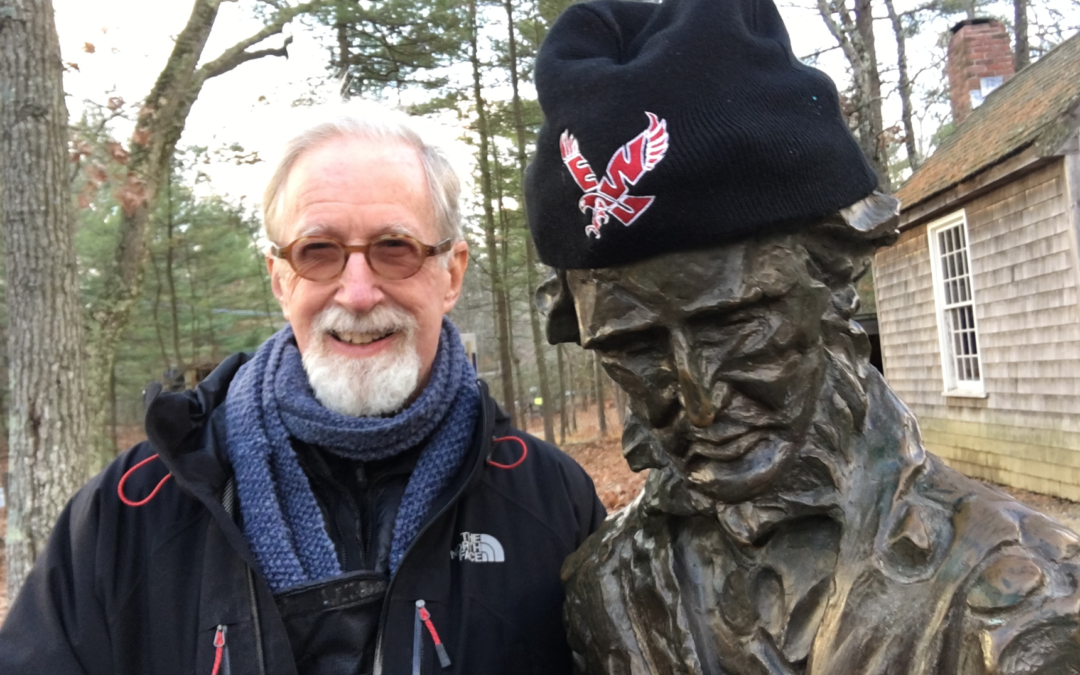Note: I originally wrote this post several years ago — it is still relevant!
Hello, Friends,
Several years ago I wrote a Fireside Talk from the shores of Walden Pond — the most famous pond in the universe (really!) and the “wilderness” home of Henry David Thoreau, the spiritual father of wilderness appreciation around the world. I was staying at a bed and breakfast just across the road from Walden, and I did a little tour of the environs with History 453 in mind. Here is my report.
First I stopped by the replica of Thoreau’s cabin and visited with a nearby bronze statue of Thoreau. As it was cold, I leant him my hat, knowing after my many visits to Walden that he too is a fan of the Eagles.
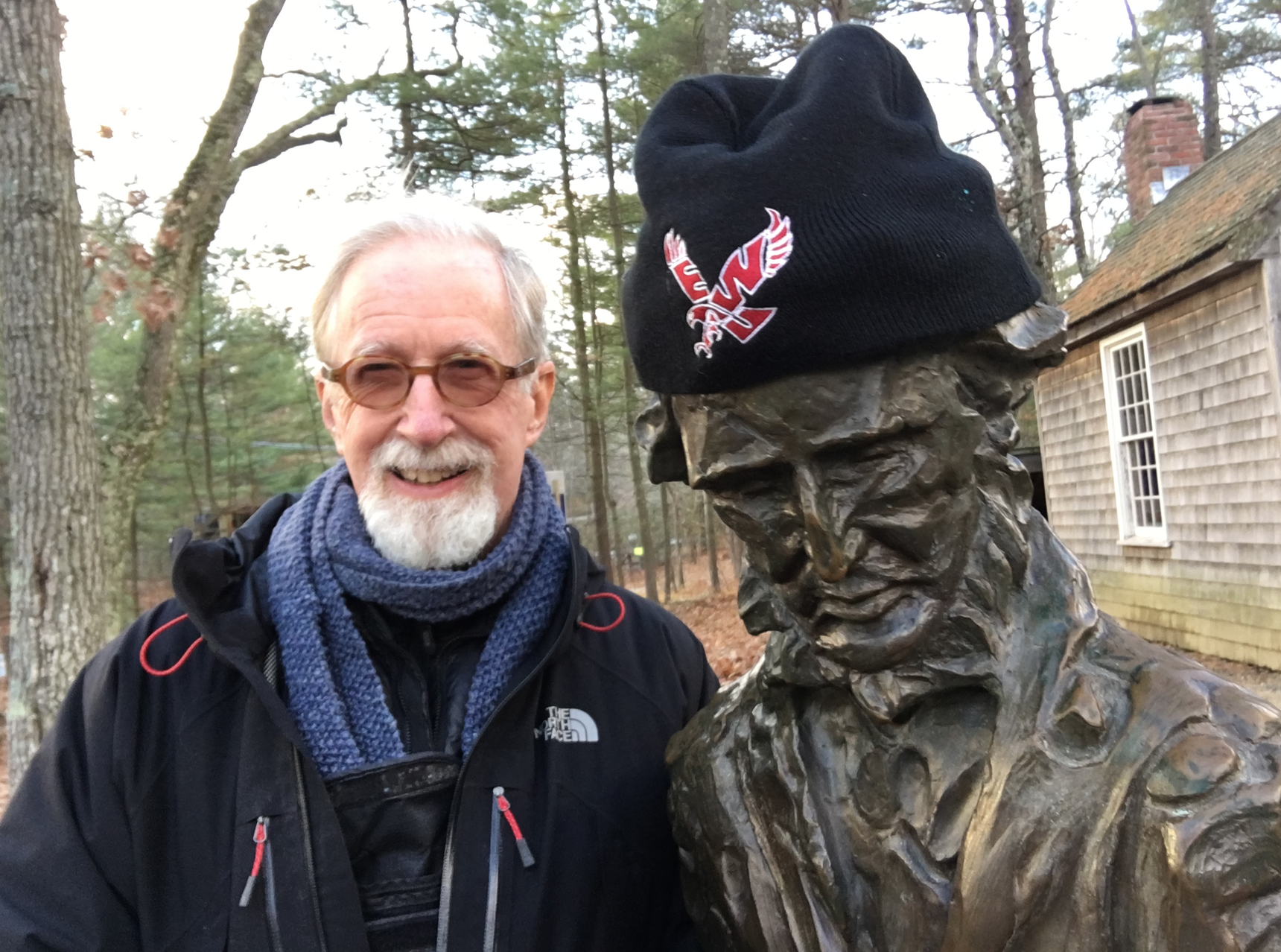
I next went into the replica of his cabin. There are many such replicas of this, the most famous cabin in the world, even in Russia, and you can buy plans for the cabin in the nearby Walden Pond Bookstore. In his book Thoreau describes building the cabin with “the labor of my hands only.” The cabin is small as you can see, and Thoreau aimed to prove that one could live well, close to nature, sustained by the “bare essentials” of life only. Here he is standing in front of his house: notice the little shed behind with his wood pile. (In my post last week on a more recent visit to Walden Pond I included a picture showing stone pillars that marked the initial location of the cabin in the woods.)
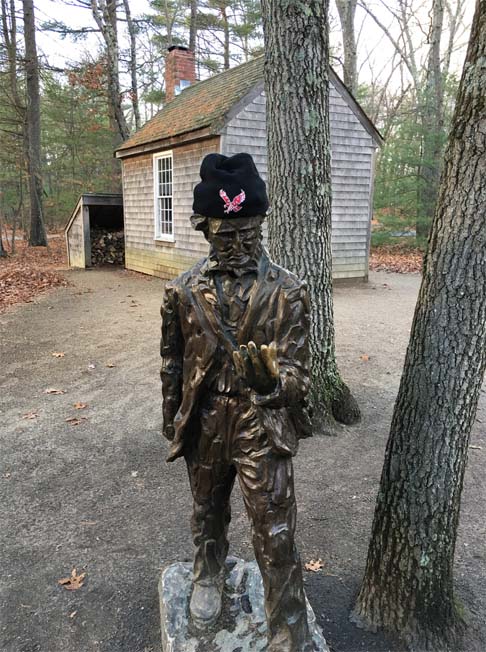
Inside the cabin are Thoreauvian furniture-replicas, carefully modeled on the actual furnishings of the cabin. Here is the desk where he worked on one of the most famous books in the English language: Walden: Or a Year in the Woods. One of the things I like about this replica is that since it is not all original materials, you can come in, sit on the bed, write in the guest book, and hang your hat on the chair. Don’t try that with original artifacts in a museum!
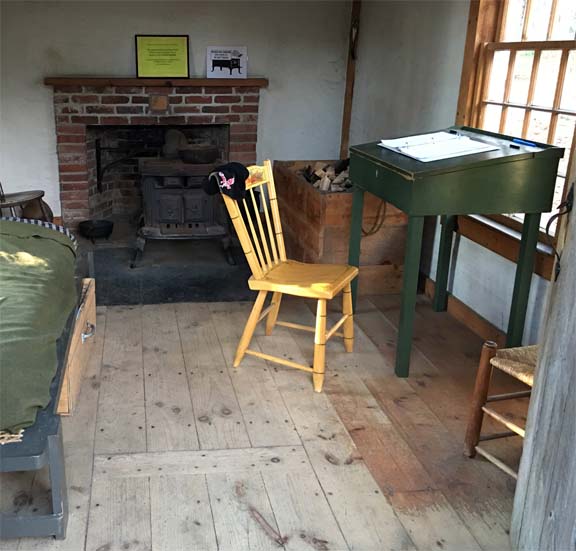
Henry David Thoreau loved a good fire. He built the fireplace himself. During his second year in the cabin — yes he spent two years, two months, and two days here although his book title suggests just one — during his second winter he heated the cabin with an iron stove. In this passage from the chapter on “House Warming” in Walden Thoreau notes that he added a stove for practical reasons but missed the open fire:
The next winter I used a small cooking-stove for economy, since I did not own the forest; but it did not keep fire so well as the open fireplace. Cooking was then, for the most part, no longer a poetic, but merely a chemic process. It will soon be forgotten, in these days of stoves, that we used to roast potatoes in the ashes, after the Indian fashion. The stove not only took up room and scented the house, but it concealed the fire, and I felt as if I had lost a companion.
Arguably this is the reason so many of us love fireplaces in our own houses–in this way we bring something of the wild-erness into our homes. Here is a close-up of a working model of Thoreau’s iron fireplace:
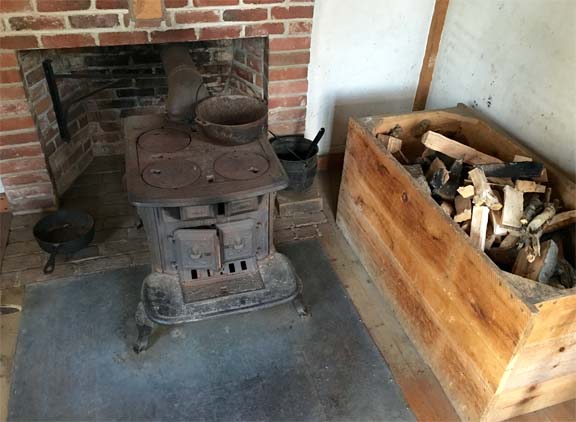
Notice the box of firewood — how could you miss it? During cold days the park service maintains a fire in the stove, a blessing for pond-hikers wanting to warm up. .

